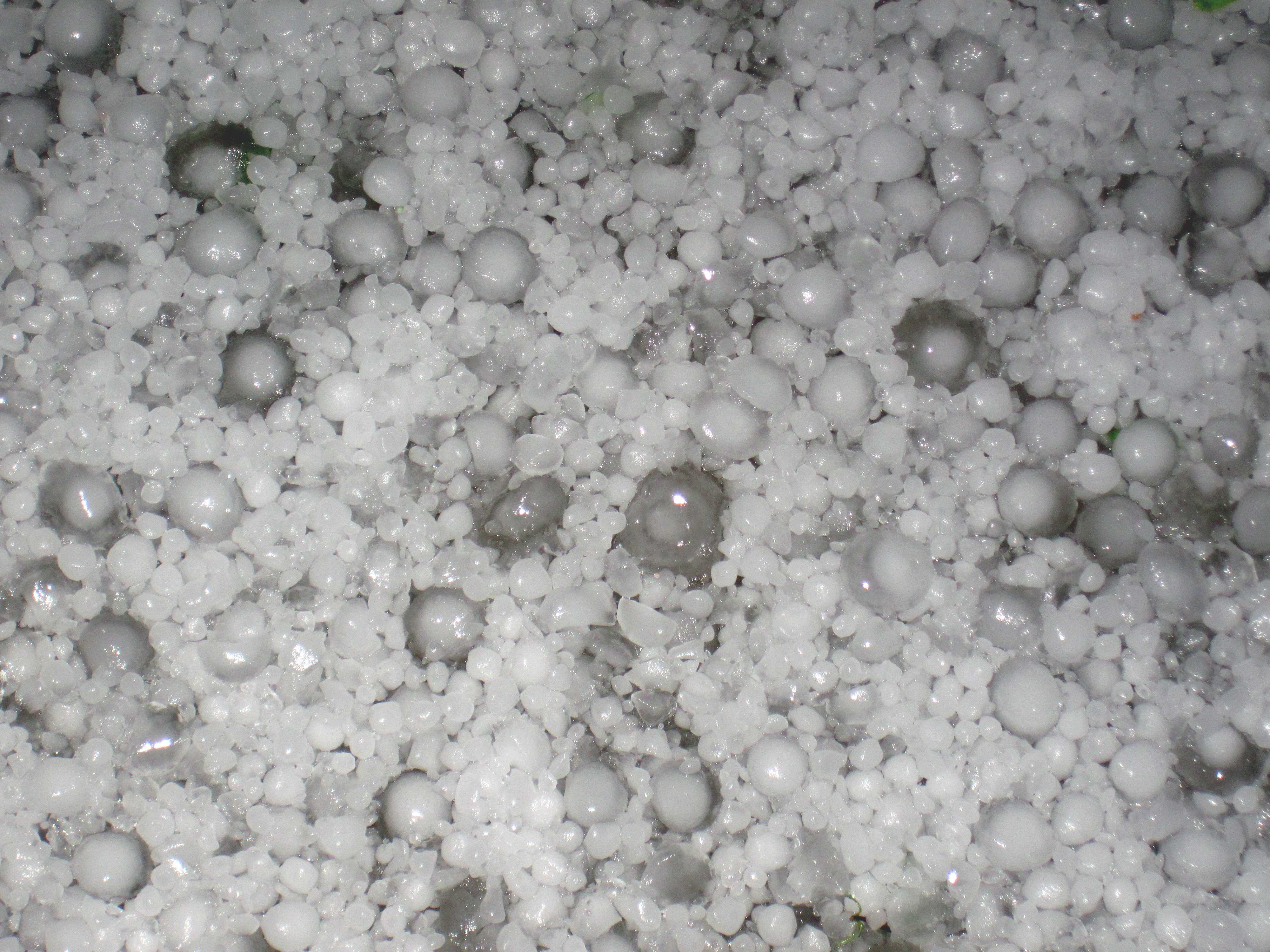Hail
(Section 3.2.1.2.9)Definition: Hail: Precipitation of particles of ice (hailstones). These can be either transparent, or partly or completely opaque. They are usually spheroidal, conical or irregular in form, and generally 5−50 mm in diameter. The particles may fall from a cloud either separately or agglomerated in irregular lumps.
Falls of hail always occur as showers. They are generally observed during heavy thunderstorms.
Hailstones usually form around a nucleus that may not be at their geometric centre. The nucleus may be anywhere between a few millimetres and a centimetre in diameter. The nucleus is spheroidal or conical and is composed of ice that is usually opaque, but sometimes transparent.
Hailstones can occur with a great variety of forms and dimensions, even within a single fall. An “onion skin” formation, for example, consists of a nucleus surrounded by alternating layers of opaque and transparent ice. There are usually not more than five layers, except in very large hailstones, which have been found to have 20 or more layers. Some other hailstones do not have any layers, and consist of transparent or opaque ice only.
Hailstones typically have a density between 0.85 g/cm3 and 0.92 g/cm3, but may have a lower density if they have large cavities filled with air. Some hailstones are partly composed of spongy ice, which is a mixture of ice, water and air.
In exceptional circumstances, large hailstones can stick together to form irregular lumps of giant hail.
Hailstones form when a nucleus collects cloud droplets or drops of rain. There is no general agreement on the nature of this nucleus; the tendency is, however, to admit that it is usually a particle of small hail that has formed around a snow pellet.




